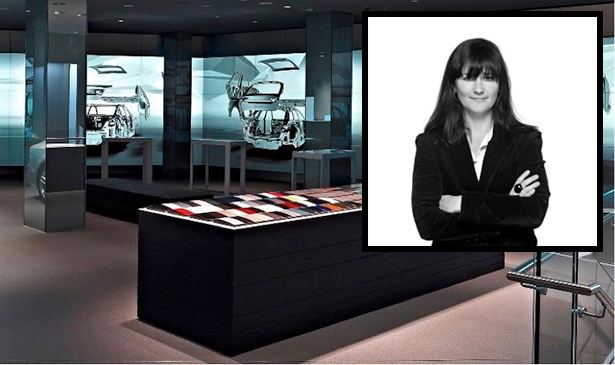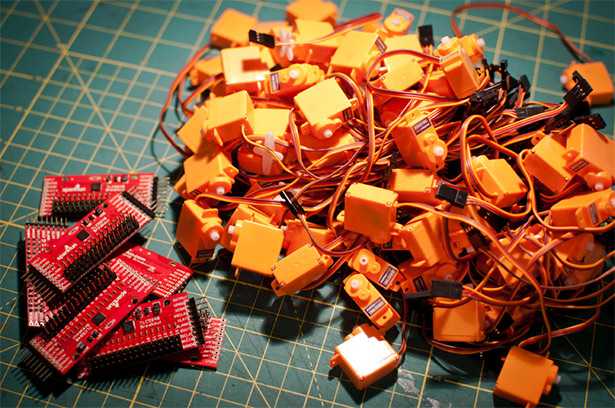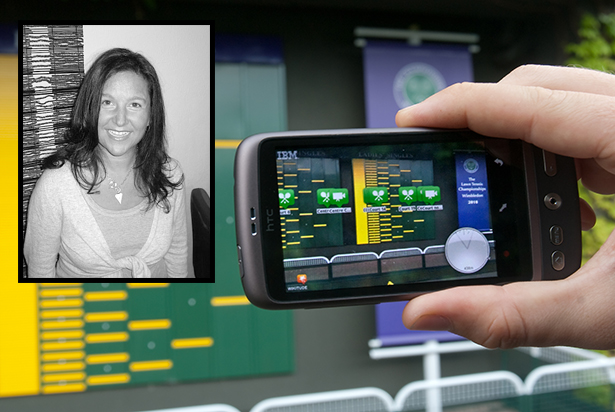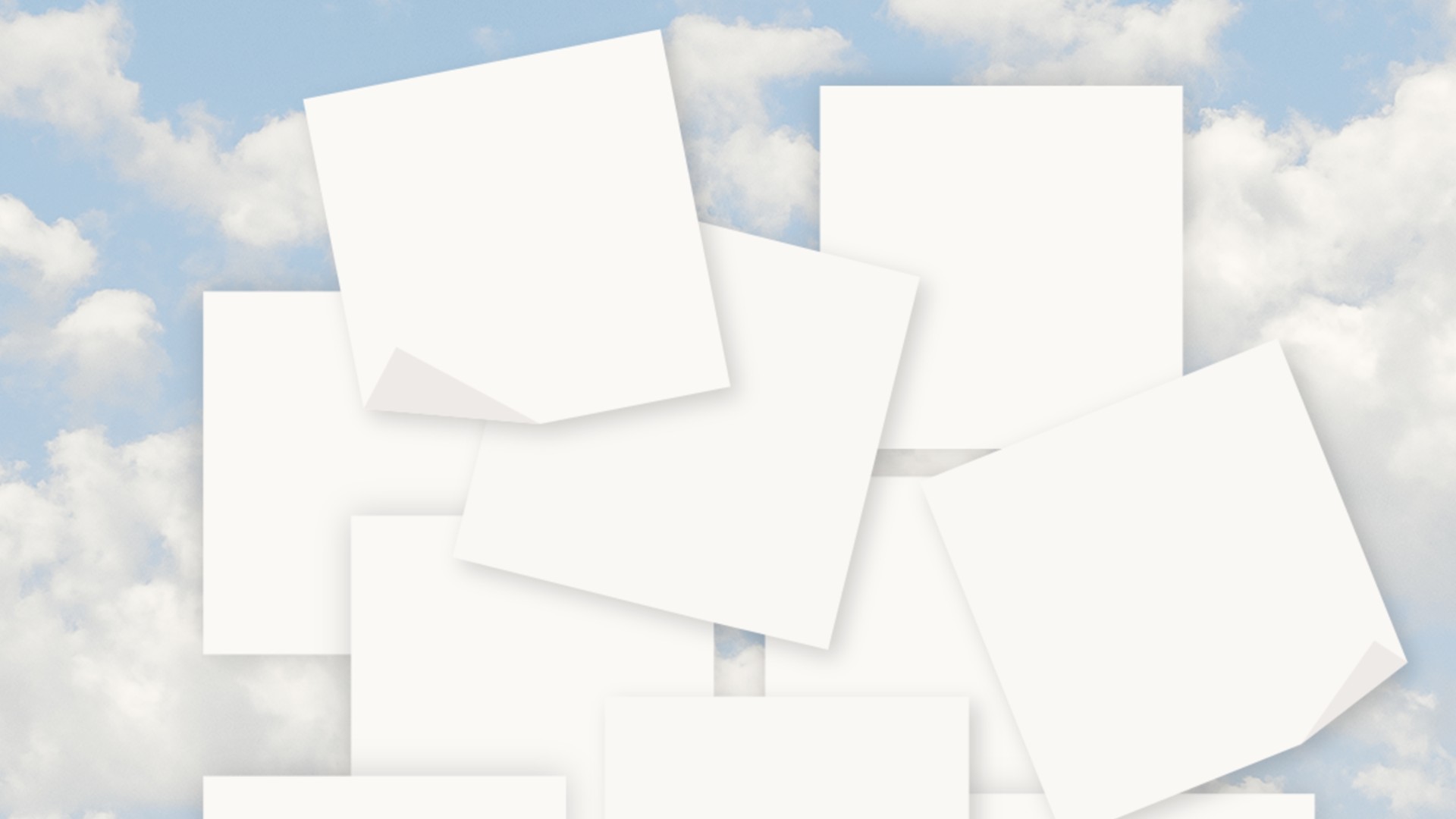Inside the labs of the world's leading digital agencies
We take an exclusive look inside the world’s leading digital labs, and reveal what it takes to staff, fund and operate your very own agency lab
If you work in marketing, web design or web development then you’ve probably heard about the growing number of labs being launched within digital agencies. They can include UX designers, creative directors, developers, brand strategists and all manner of other job roles. In fact, you may already have one where you work.
But what is a lab? How can it benefit an agency? What should a lab look like? And do you need to buy white coats and develop an unhealthy obsession with lasers? We’ve spent the last few weeks speaking to agencies from around the world, looking for answers to these very questions. From global behemoths such as BBH and Ogilvy, to smaller agencies such as Mint Digital and Teehan+Lax, labs are thriving. So read on, as we reveal what goes on inside the world’s best digital labs.
Why introduce a lab?
When we mentioned running a piece on labs to one of our more cynical contributors we got the following response: “WTF does does an agency lab actually do?” It’s a fair question, a very good question in fact, because there’s no blueprint out there that shows you how to set up and manage the perfect lab. It depends on a whole bunch of factors, that differ greatly depending on an agency’s culture, size, focus and motivation.
“Huge Labs was launched in 2011 as a way to foster innovation among Huge employees and build products and technologies that can help marketers, and advance the state of digital,” explains Aaron Shapiro, CEO at Huge. “The company conducted a pitch process where any Huge employee could present an idea for a product they’d like to create. A panel of executives reviewed all the pitches and selected three initial products to build.”

Shapiro comes from an entrepreneurial background, having co-founded Silverpop, a leading email marketing company, in 1999. His approach mirrors his background: each Labs company has its own CEO and full-time team, with the focus put on creating a product that can ultimately become profitable – just like any other startup.
“Huge Labs’ main priority is to build technology startup products that can be launched externally and spun off into their own companies,” Shapiro says. “We think the best way to build viable technology and products is to build them in the context of building viable businesses. So we really focus on building a successful company, not just a successful project or product. A great idea and product is just one part of the equation – each company needs a great team, good business model and so forth.”
So, no building robots and endless tinkering into the early hours. No playing around with LEDs to make them display random Back to the Future quotes. This kind of lab isn’t about experimentation. Dave Knox, chief marketing officer at Rockfish agrees. In his opinion, labs must fit into an entrepreneurial model.
Daily design news, reviews, how-tos and more, as picked by the editors.
“Rockfish is an entrepreneurial company, where our ideas and insights are born from the experiences that we’ve had building our own companies,” says Knox. “Rockfish Labs is our business incubator focused on bringing entrepreneurs' ideas to life. The priority of Labs is to launch new products like CouponFactory and YouEarnedIt.”

Beyond the entrepreneur
BBH Labs is probably the world’s best-known agency lab, and broadens its scope beyond entrepreneurship. Co-founded by managing partner Mel Exon and Ben Malbon (now MD at Google Creative Lab) in 2008, BBH Labs was established as a response to the increasingly speedy pace of change both within advertising and beyond.
“Everyone at BBH is responsible for evolving what the agency does for clients and how we do it – innovation is part of the day job in what has always been a very restless, creative agency,” explains Labs co-founder Mel Exon. “The difference with Labs is that experimentation and the transfer of that learning is the day job – it's all we do.”

But there is room for pure experimentation, too, and not every agency sets up a lab as a profitable exercise. Enter Teehan+Lax Labs. Despite the work that takes place in its lab often having a positive effect on its client offering, T+L’s approach is unique among the agencies we spoke to, and could not be more different from the entrepreneurial model.
“We were seeing in the company that clients' demands were not allowing people to explore new ideas,” explains co-founder Jon Lax. “I began to wonder, inside this environment, how new ideas get introduced? I saw us reaching for the same tools again and again to solve client problems. Pete Nitsch, director of the lab, and I originally discussed the idea of a group, whose only mission was to 'explore possibility'; basically a group that would go out to the edges of technology, investigate enough to come back and tell the company, 'There is this thing over there'.”

An example of this was Node.js. In the first few weeks of Node’s launch, the T+L Lab picked it up and used it for an experiment, which - though in itself forgettable - offered a glimpse of the potential that this new technology offered.
“I don’t even remember the experiment, but I remember Pete starting to talk about Node and what it could do,” Lax says. “He did a short introduction to Node for the company. Node quickly became a valuable tool for client work.The lab’s purpose is to make our work better. It is not responsible for client work. This was very conscious.”

What do labs do?
Nicole Yershon epitomises the idea of a client-driven (though not client-funded) lab. As director at Ogilvy Digital Innovation Labs, Yershon is part of a small (international) group of people responsible for labs across Ogilvy’s 11 departments, comprised of more than 1600 people. And rather than create specific products, Yershon chooses to examine emerging trends and tech that can help develop its client offering.
“At Ogilvy it’s not people in a lab coding and doing that kind of thing,” Yershon tells us. “For the London lab we operate a hub and spoke model. The hub is a physical space in the middle, but there’s lots of spokes that come out of it that cover a variety of things. One of those spokes is ‘Semesters of learning’.
“Semesters of learning are 12 to 24 weeks of totally focused learning, where we’ll see 10 to 15 different partners or suppliers on a specific subject. Once we finish a semester we will then use what we’ve learned to help an existing client. In the case of video streaming, for example, we used our learning to help deliver a Ford campaign,” Yershon explains.

Dare, however, takes the best of both worlds, and prefers to aim for a mix of in-house products and client development work via Dare Labs. Set up in 2007, the lab focuses on technology, products and IP, and it’s a safer middle ground that many labs operate in.
“Dare Labs works on both client projects, consulting on innovation and developing prototypes and products on their behalf, as well as creating our own products and original IP, such as the Puppets app we’re launching in November,” says Will Nicholls, joint client service director at Dare. “But our work starts with developing our own original technology, either conceived as a building block with relevance to lots of products, or conceived of as a consumer-facing product idea. This work then often triggers or informs a client conversation.”

Keeping things fresh
What most of the agencies we’ve spoken to do agree on is the importance of non-client projects as a way of motivating and retaining staff in an increasingly competitive and shifting industry.
“Non-client projects have loads of benefits. They make Mint a fun place to work. The best designers and developers crave autonomy, and they get more freedom on non-client projects,” says Andy Bell, co-founder and creative director at Mint Digital. “Non-client projects have also given us something productive to do in the inevitable quiet spells.”

BBH also tries to achieve a mix of work in its labs, focusing on innovative thinking, lab experiments, client projects and pitches, and knowledge transfer.
“We develop our own projects to test emerging technology and audience behaviour via our labs' experiments, and have a dedicated space in New York lovingly referred to as the 'The Toy Store'. The primary functions of the space are that of a developer's cove, and a centralised location for the development of physical computing prototypes,” says Exon. “We also work with clients on a project basis when an innovation-led solution to a business opportunity is required.”
Unlike most agencies, Teehan+Lax is explicit about its lab not revolving around client work, with the focus remaining on experimentation and discovery and no expectations being placed on a specific project to make money for the agency.
“The role of the Lab is to conduct experiments,” Jon Lax is at pains to point out. “We very carefully use the word 'experiment' and not 'project' or 'product'. We try to construct experiments that only take about two weeks. So every two weeks the Lab is working on something else. Their job is to come up with a hypothesis, create an experiment, and make something to prove or disprove the hypothesis. Through this process we learn a lot very quickly.”
Should a lab be client funded?
The questions of whether client work is part of your day-to-day lab output, whether a lab should pitch directly, and whether your lab is client-funded all loom large over any experimental arm of an agency. It’s vital to establish the boundaries at the outset, because the temptation will always be to move towards a client-focused setup.
“We do pitch, but we are careful to only pitch to like-minded clients who will understand the value of the prototype we have created or the innovative solution we are proposing,” says Will Nicholls at Dare. “And sometimes we find the pitch is really a collaborative development process where we are jointly mapping out the project and the idea, which we then take forward to execution.”
However, with small team sizes often making it impossible to innovate within a client setting, this is definitely not the norm for the labs we spoke to. For example, despite the majority of work undertaken by its Innovation Labs usually resulting in the improvement of a client project, Ogilvy’s Nicole Yershon is adamant that her lab sits apart from the main business, and generates its own revenue.
“I’m not involved in the pitching process, and I try not to get pulled into meetings,” explains Yershon. “Labs in London is not paid for by Ogilvy. The only commitment they have is two salaries, with all the money we earn in labs paying for our R&D. Otherwise, what would happen is we’d never be able to do anything innovative, because the day job would always be getting in the way – the client says ‘Jump!’, and you always say ‘How high?’.”
Jon Lax is more explicit about whether a lab should pitch for work, and the effect that it has on the potential of a lab to drive innovation in your agency.
“You do not pitch and you do not bill,” says Lax. “This is incredibly important. The job of our lab is to make us smarter as a company, not earn direct revenue. From the beginning I went to the partners and said, 'This is what Labs is going to cost this year. This is a cost of doing business. We will recoup it in other ways.'”
Is a lab right for everyone?
By this point you may have decided that a lab seems like a great idea, but there are differing opinions on how easy it is to sustain a lab within an agency of any size, big or small.
“Any lab's initiative is difficult in an agency environment, because building a product requires lots of focused, dedicated resources, which is very hard to do in an agency environment, which by definition is oriented towards billable resources and client projects,” says Aaron Shapiro. “So it is less about agency size than having the discipline, vision and culture to really make a lab work.”
A lab will cost you money, will require extra resource, and will need to be supported by everyone involved in the running of your agency if it has any chance of succeeding. And you must enter into any foundation of a lab with those caveats in mind. Jon Lax believe that you really need to have the scale of a medium to large agency.
“I think it’s the reserve of medium and large agencies,” Lax tells us. “I think you need a certain scale to properly fund a lab. I hear these seven to 10 person companies tell me, 'We have a Lab'. Mostly they claim they spend 20 per cent time on it, which is bullshit. 20 per cent time doesn’t exist, not even at Google. Larger agencies can fund labs, but typically they make them billable. I think a lab needs dedicated staff and that just requires a certain scale to make the economics work. I can absorb those costs into our overhead at our scale. I could not have done it at 20 people.”
But co-founder of The Barbarian Group, Keith Butters, disagrees. The Barbarian Group now employs over a hundred people across three offices, and is one of the world’s leading digital agencies – but it has had a lab from its inception in 2001.
“I don’t think a lab is the preserve of small and medium sized agencies at all,” Butters opines. “We did lab type work when we were six people. It’s all about investing time in learning and making new things.”

How do you share?
Once you have your lab in place, one of the toughest things to do is successfully share what you’ve discovered. With labs teams often being particularly small (two to 10 people, typically) the matter of how information is shared through an agency becomes vitally important.
“We share information in a few ways,” explains Butters. “First, this place is very collaborative and continued information sharing throughout the agency is valued and encouraged. There’s a lot of casual Q&A and, ‘Hey, come check this out’ always happening. We also do a Demo Day every couple of months, where folks present their side projects and R&D work. We host internal monthly learning sessions called ‘Barbarians Teaching Barbarians’, where some of the topics taught are R&D based. And obviously we use the blog.”
As well as the usual means of sharing ideas, such as physical space and catch-up sessions, Ogilvy’s Nicole Yershon has set up an email list to keep the company, or at least some of it, updated with her findings. With just two people in its lab, sharing efficiently is a must.
“I have an email group called LonLabs, and everything we share goes via that group,” Yershon tells us. “I don’t bother trying to convert the whole of Ogilvy. When I first started seeing all these amazing things I would send them to everybody. I’d get emails back saying ‘Stop spamming me!’. But it’s the hunters I’m interested in reaching [see Seth Godin’s post on this ]. They’re not frightened. It’s the hunters that move you forward.”
Conclusion
A lab isn’t right for every agency. Some may be too small, too focused, or simply integrate lab-style thinking in other ways. And, as we’ve illustrated, the very concept of what constitutes a lab can differ greatly. Hopefully, though, this glimpse inside the world of the agency lab has given you an idea of which approach might be best for you, should you decide to implement your own. (Or maybe provide the impetus to put yourself forward as the person willing to start a lab within the agency you work for.)
If we can learn anything about labs from the agencies we spoke to, it’s that without them you can easily miss fantastic opportunities – not just to identify emerging technology and ideas, but to find brilliant people willing to push your agency to the next level.

The Creative Bloq team is made up of a group of art and design enthusiasts, and has changed and evolved since Creative Bloq began back in 2012. The current website team consists of eight full-time members of staff: Editor Georgia Coggan, Deputy Editor Rosie Hilder, Ecommerce Editor Beren Neale, Senior News Editor Daniel Piper, Editor, Digital Art and 3D Ian Dean, Tech Reviews Editor Erlingur Einarsson, Ecommerce Writer Beth Nicholls and Staff Writer Natalie Fear, as well as a roster of freelancers from around the world. The ImagineFX magazine team also pitch in, ensuring that content from leading digital art publication ImagineFX is represented on Creative Bloq.
